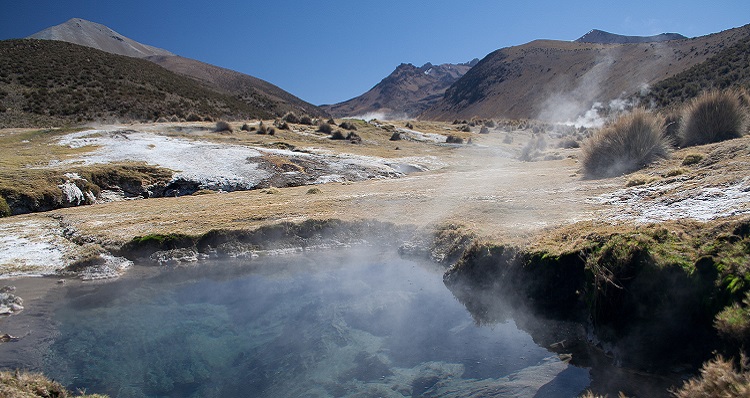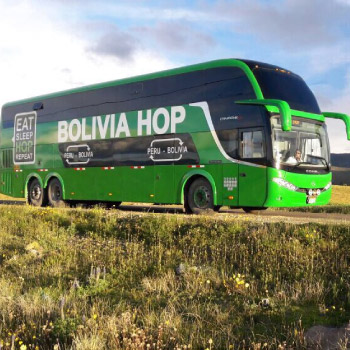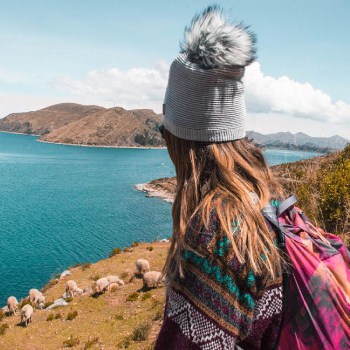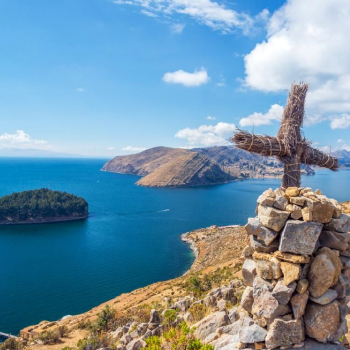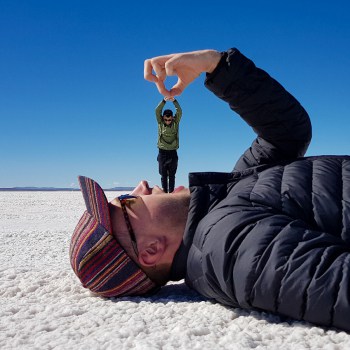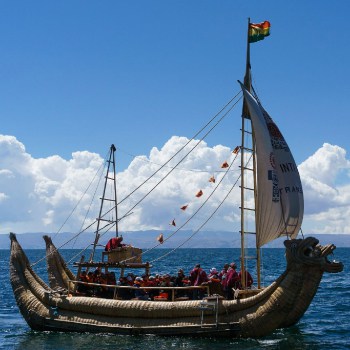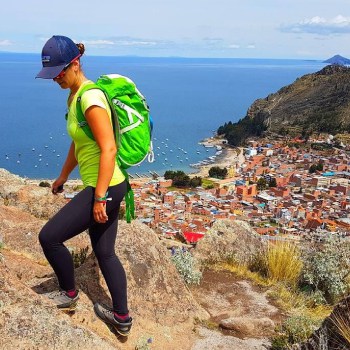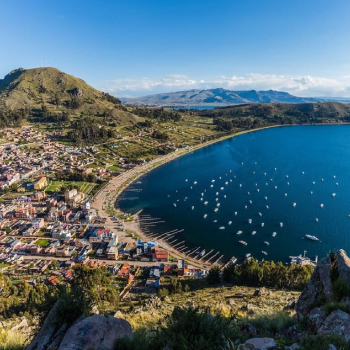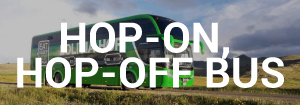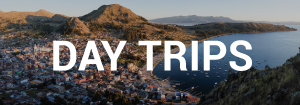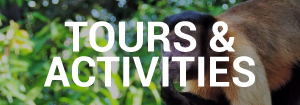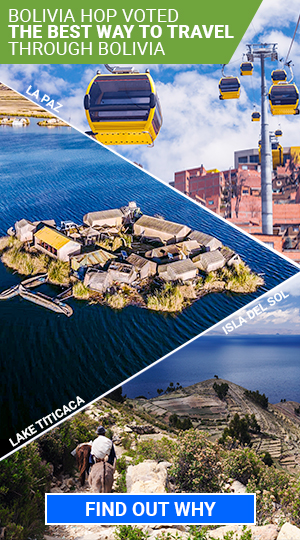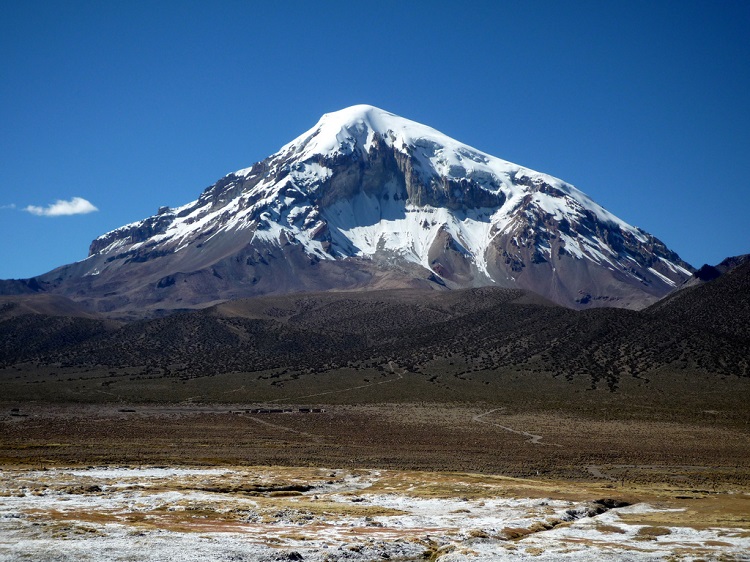
Photo Credit: Twiga269
Presenting a magnificent Andean dreamscape of snowcapped volcanoes, soaring mountains, bubbling hotsprings, bird-dwelling wetlands and vast wild plains, Bolivia’s oldest national park makes an exemplary location for photographers and adventurers alike.
Located in the southwestern department of Oruro, Sajama National Park borders the province of La Paz in the north and Chile’s Lauca National Park in the west. Occupying the ecoregion of Puna, a high Andean plateau situated at 6,542 meters above sea level, the park is also part of the volcanic Cordillera Occidental, home to Bolivia’s highest mountain peak, Navajo Sajama.
Spanning an area of 1002 square kilometers, the extensive plains of the altiplano are prime grazing country for the park’s legion of vicuñas, alpacas and llamas. Many endemic plants and animals thrive within Sajama’s walls, making its continued conservation of great importance to both local and scientific communities.
Established as a natural reserve in 1939, Sajama National Park has been home to Bolivia’s Aymara people for thousands of years. Unique artifacts, age-old burial sites, cave paintings, small adobe churches and mysterious lines dot the otherworldly landscape, demonstrating the incredible influence the ancient indigenous culture has had throughout the region.
Due to Sajama’s universal cultural and natural significance, in 2003 the park was added to the UNESCO world Heritage Tentative List. Renowned for its enchanting scenery, abundant flora and fauna, incredible trekking, and pre-hispanic archaeological sites , it’s easy to see why Sajama National Park is one of Bolivia’s crowning jewels.
Bolivia travel tips
- Bolivia has a variety of tourist attractions for all types of travelers, make sure to plan ahead of time!
- Many travelers continue their journey to Peru. Make sure to check out Bolivia Hop, considered the best way to travel between Bolivia and Peru.
- Nearly everyone visits Bolivia for the Salt Flats. Check out the official Salar de Uyuni website for all the information you’ll need.
Plants and Wildlife
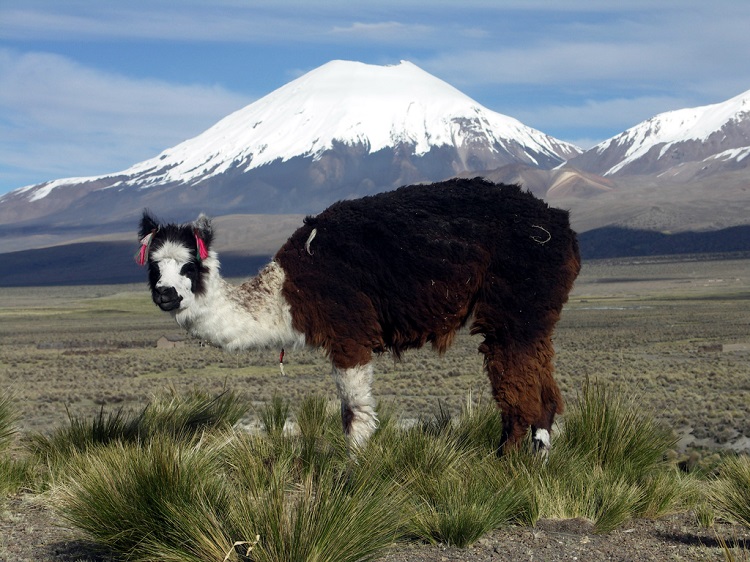
Photo Credit: Static Noise
Teaming with llamas, alpacas, vicuñas, armadillos, bears, Andean cats, pumas, condors, ostriches, pink flamingos, coots, hummingbirds, and other high-altitude animals, Sajama National Park is a sensational destination for wildlife watching.
Adorned with Andean wetlands, blue lagoons and bubbling hot-springs, the park’s most notable characteristic is its unique forest rising along the slope of the Sajama mountain.
Regarded as some of the highest forest in the world, the Queñoa forest is made up of 3 meter high shrub-like plants which have adapted to the steep elevations and harsh climate of the Andes. Grown almost exclusively in the area, the one-of-a-kind trees were a contributing factor to Sajama being declared a nature reserve, a decision which has ensured the Queñoa forest remains protected from excessive harvesting by the outside world.
In order to protect and preserve the flora and fauna of Sajama National park, conservation programs have been jointly administered by park service officials and the indigenous people of the region.
Weather
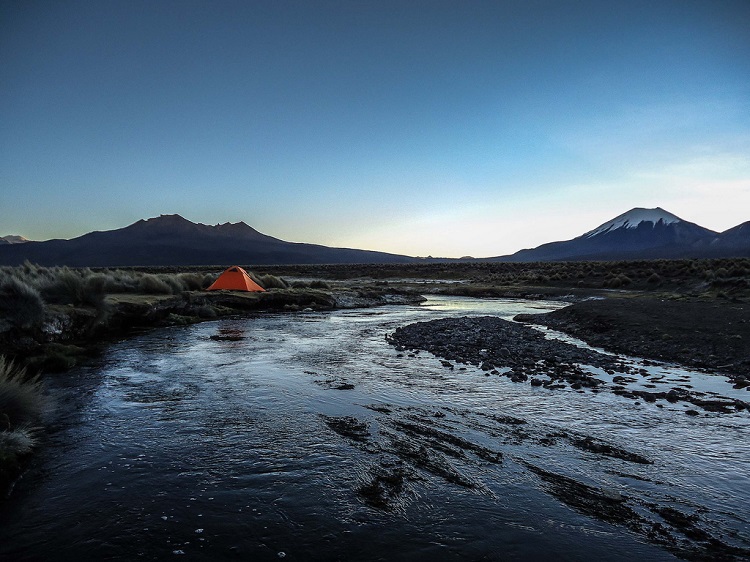
Photo Credit: Captp
With elevations ranging from 4,200 to 6,542 meters, climatic conditions in Sajama National Park are semi-arid and cold.
While temperatures in the park can be quite warm throughout the day, evenings can become extremely chilly, dropping to below 0°C at night. The park enjoys an annual average temperate of 10 °C, with a low in winter of –30 °C and a daytime high of 22 °C in the summer. There is frost throughout the year and a rainy season in the summer (December to March).
The average annual rainfall is 300 mm with January being the wettest month. Due to the park’s dry climate and lack of cloud cover, unobstructed views of Sajama’s high mountain peaks can be enjoyed all year round. Unfortunately, the harsh altiplano climate is not very conducive to productive agriculture, meaning only hearty crops and grains such as quinoa can grow in the area.
The best time to visit Sajama National Park is in the dry season (April – November). Despite the colder weather, this is the time when roads and trails are less muddy. For those travelling between December and March be aware that tourist attractions may be limited due to heavy rainfall.
Bolivian Life Quick Tip:
As voted the best way to travel around Bolivia and Peru, we highly recommend choosing Bolivia Hop as your means of transport. Their safe, flexible and trustworthy service have proven to be the best way of getting the most out of your time in South America!
Local People
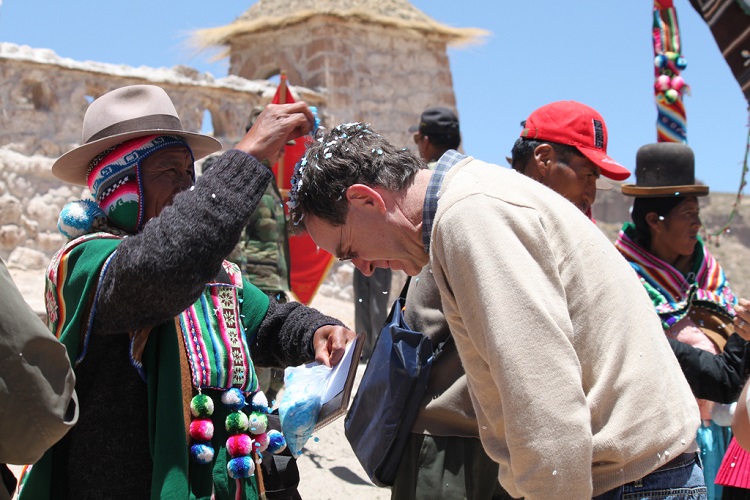
Photo Credit: Embajada de Estados Unidos
The population of Sajama National Park is comprised of small Aymaran communities who have lived in the rugged region for millennia.
It is estimated more than 300 indigenous families live inside the park’s catchment area, working the land as they have always done. Most of their time is spent raising and herding livestock, using the wool of llamas and alpacas to yarn fabrics and weave beautiful textiles. The finished products are then passed down through generations as inherited wealth. The practice of agriculture is limited in the communities due to the harsh Altiplano climate, so the growing of quinoa and potatoes is for self consumption only.
Whilst the majority of Sajama’s indigenous communities still practise ancient customs and traditions, it’s becoming more and more common for the Aymaras to merge their traditional lifestyle with modern technologies. Today some of the local people make a living from Sajama’s growing eco-tourism as well as from small commercial ventures such as handicrafts, weavings and textiles.
Living in sync with the environment they so heavily depend on, the Aymara inhabitants cooperate with park service officials, not only to better their living conditions, but to ensure a sustainable future, helping to protect the vulnerable environment they live in.
Popular Things To Do
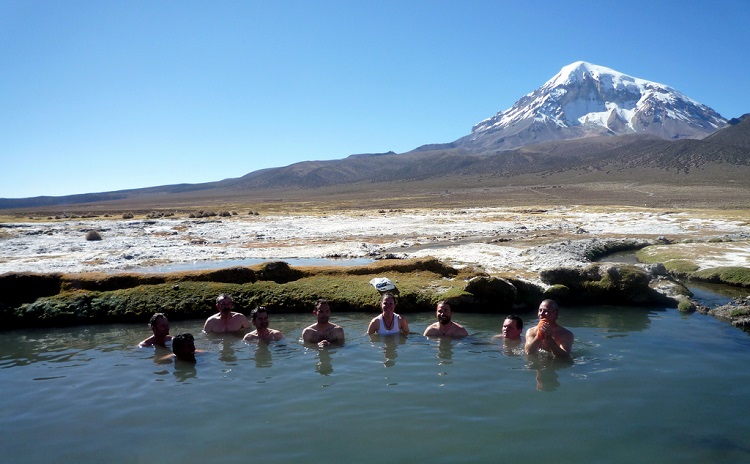
Photo Credit: Twiga269
- Bathe in natural hotsprings
- Get up at dawn to visit the geysers of Walla Keristo
- Go bird watching at Lauca River
- Do a 2 day hike to Lago de Alturas
- Climb Nevado Sajama volcano
- Check out the mysterious Sajama Lines
- Wander through pre-hispanic archaeological sites
- Photograph wildlife at Lago Huanakota
- Observe fascinating works of art at the “Andean Sistine Chapel”, a beautiful church located in the colonial city of Curahuara de Carangas
- Discover Tomarapi’s cave paintings
- Interact with locals, learning about the Aymara way of life
Tours
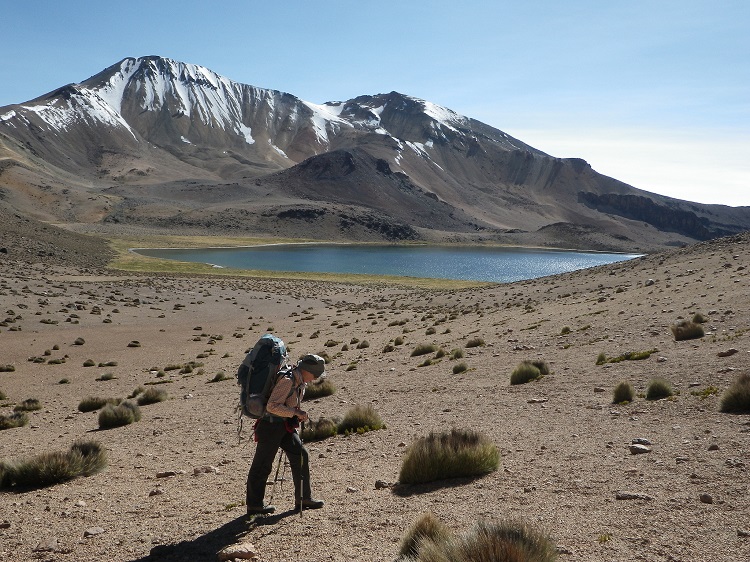
Photo Credit: Fanny & Greg
Whilst it’s definitely possible to explore Sajama National Park on your own, it’s highly recommended to book a tour not only for the convenience of getting there, but in order to get the most our of your experience. There are plenty of tour operators serving the national park offering different programs for varying lengths of time.
The average cost for a good quality 2 day / 1 night tour is around $200 US per person which typically includes the following:
- Experienced local guide
- Accommodation in an lodges or tents
- Meals and drinks (water/juices)
- Guided tours and activities
- Private Transportation to and from Sajama National Park
Most tours are all-inclusive and can be paid for in advance by credit card. You can book in advance via email or on a walk-in basis directly in La Paz or the town of Sajama. If possible, try to organize a group of 4 or more people to travel with as prices become a lot cheaper the more people sharing a tour.
When booking a tour, it’s important to note that quality and standards do vary significantly according to price. Higher tour prices usually mean tour staff are paid well year round, guides are professional and knowledgeable, accommodation is comfortable, profits go back into conservation work, and companies are environmentally conscious.
For those touring Sajama National Park on their own, rangers at the tourist office, Servicio Nacional de Areas Protegias (SERNAP) in Sajama Village can help answer most of your questions. They can arrange mules, porters and/or guides for mountain climbers, costing around 560 Bs ($80 US) per day for guides and around 140 Bs ($20 US) for porters and can also arrange homestay-style accommodation for you in Sajama Village. For inquiries about Sajama National Park, you can email the tourist office in advance at tatasajama@hotmail.com
Tour Companies
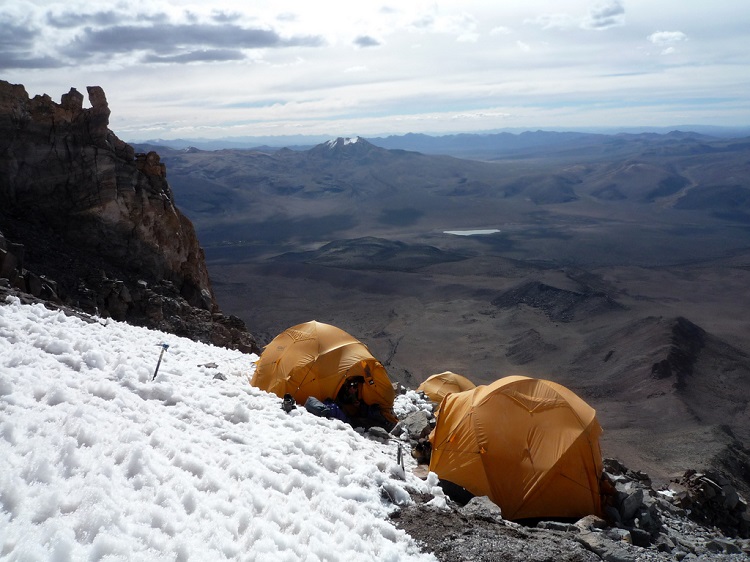
Photo Credit: Twiga269
The following are reputable companies offering daily and multi-day tours of Sajara National Park:
- Banjo Tours
- Inca Land Tours
- Millenarian Tourism & Travel
- Tupiza Tours
- Kanoo Tours
Park Fees and Requirements
The entrance fee to Sajara National Park is 100 Bs ($14 US) and the price includes a small map of the park. Be aware that most tour operators do not include this entrance fee in their price. Another 30 Bs is required if you want to soak in the hotsprings.
Tourists are also required to register at the park using their passport information
Getting There
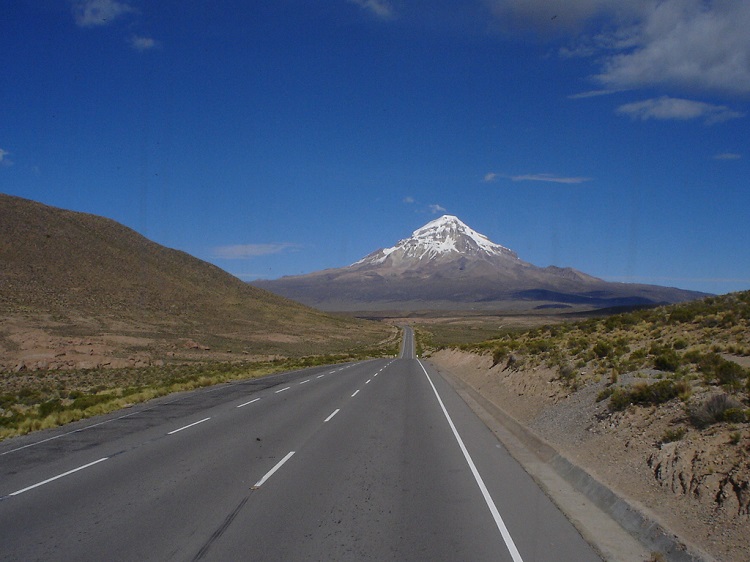
Photo Credit: MaximeF
Sajama National Park is easily accessible via the newly paved Patacamaya-Tambo Quemado road, connecting La Paz, Oruro and Arica, Chile.
By Bus
As there are no buses travelling direct to Sajama, travellers must transfer in the small town of Patacamaya, a small truck-stop on the main road between La Paz and Oruro.
Please note: Buses don’t always run on a Sunday, so make sure to be flexible with your travel plans
From La Paz: Take an early morning Oruro-bound bus from La Paz’s Terminal de Buses to the town of Patacamaya, from where another minibus goes direct to Sajama Village (see details below). Buses from La Paz leave every 30 minutes and the journey to Patacamaya takes around 1.5 hours. A one way ticket costs Bs 10 ($1.50 US).
From Oruro: Take one of the early morning minibuses headed for La Paz getting off at Patacamaya. There are several departures per hour and the journey from Oruro to Patacamaya is around 2 hours. You will have to pay the full price to La Paz for the ticket which costs Bs 30 ($4 US) one way. From Patacamaya take a minibus to Sajama Village (see below for details).
Alternative route from La Paz/Oruro: Take one of the several daily buses headed to Arica, Chile asking the driver to drop you off on the road leading up to Sajama. From this point you are still 12 km away from the entrance to the park, so be aware that you will either have to wait for a car to pass by to give you a lift into town, or walk the remaining distance (around 3 hours). Otherwise you can get off at the nearby town of Tambo Quemada from which transport to Sajama should be easy to find.
From Patacamaya: Take the 12 pm bus to Sajama, leaving from the north side of town in front of ‘Restaurante Capitol’. There is only one bus scheduled per day so it’s recommended that you start lining up as early as possible to secure a seat. The bus departs once full so it’s not uncommon to be waiting around until 1:30pm to hit the road. The journey to Sajama takes around three hours, costing Bs 30 ($4 US) for a one way ticket. There are no stops along the way so make sure to use the bathroom and buy snacks before heading off.
From Sajama: To get back to Patacamaya the bus leaves from the main plaza every day at 5:30 am (4 am on Sunday). You are required to be at the bus stop 15 minutes before departure, so be sure to wear warm clothes as it’s very chilly at this time of the morning. The journey takes around 3 hours and costs Bs 25 ($4 US) for a one way ticket. From Patacamaya there are many buses travelling to Oruro and La Paz.
The other option is to organise a lift from Sajama Village to the main highway and wait for a bus coming from Arica to La Paz. Buses pass the crossroad around noon and usually stop for passengers along the road. Ask the locals in Sajama for more accurate times.
By Car
Hiring a car is an ideal way not only to reach Sajama, but to explore the area as there is road access to most of the major sites within the park.
From La Paz: After driving through El Alto, head south on the main highway to Oruro. At 65 kilometres after the El Alto Tranca, just before the town of Patacamaya, there is a well-marked turn to the right (west) for the paved highway to Arica and the Chilean coast. Drive west for 169 km until you reach the right turn for the village of Sajama and Sajama National Park (the turn is just after the sign-posted 165 kilometer mark). The dirt access road to the park can be muddy in the rainy season and it can take almost half an hour to arrive at the ranger station which is 12 km from the turn at the paved road.
From within Sajama National Park: You can rent a jeep with driver from the park office to explore the park’s attractions or to get back to the main road to catch a bus. Most trips cost around 100 Bs ($16 US) per vehicle.
Bolivian Life Quick Tip:
As voted the best way to travel around Bolivia and Peru, we highly recommend choosing Bolivia Hop as your means of transport. Their safe, flexible and trustworthy service have proven to be the best way of getting the most out of your time in South America!
Where To Stay
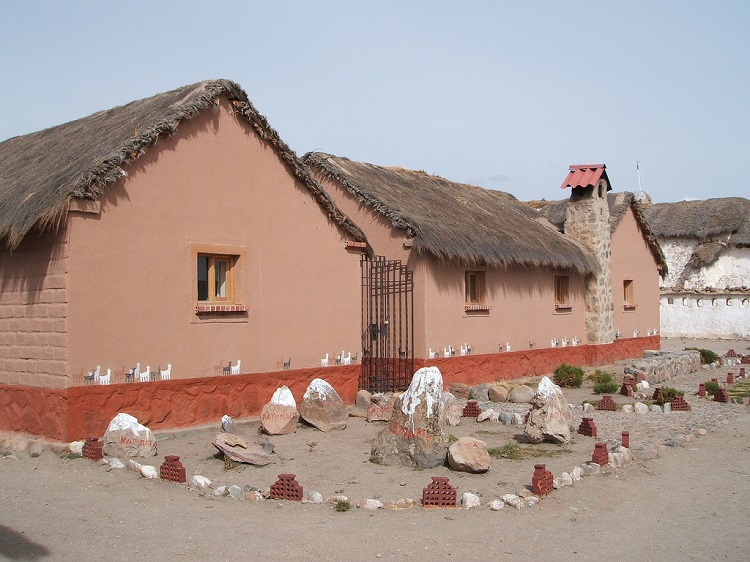
Photo Credit: Pablo Andrés Rivero
Most people visiting Sajama National Park stay in Sajama Village. Options range from camping inside the park to very basic homestay-style accommodation and comfortable hostels.
Park rangers at the tourist office can help arrange accommodation in Sajama Village, with homestays costing around 60 Bs ($9 US) per night and hostels around 80 Bs ($12 US) per night. There is also the option to stay at an ecolodge on the northern border of the park about 12km from Sajama Village. The community run lodge is the most comfortable of all the park’s options though it is a lot more expensive at 500 Bs ($72 US) per per night for full board.
Camping is possible just about anywhere inside the park, however be prepared for low temperatures and strong winds.
Reputable accommodations in the area include:
- Hostel Sajama
- Hostel Oasis
- Selenium and Sofia Hostel
- Albergue Ecoturístico Tomarapi
Note: Food, drinks, snack, etc. are twice as expensive in the park than in nearby towns. An ideal food budget in Sajama National Park would be around 25 Bs ($4 US). per day.
Travel Tips
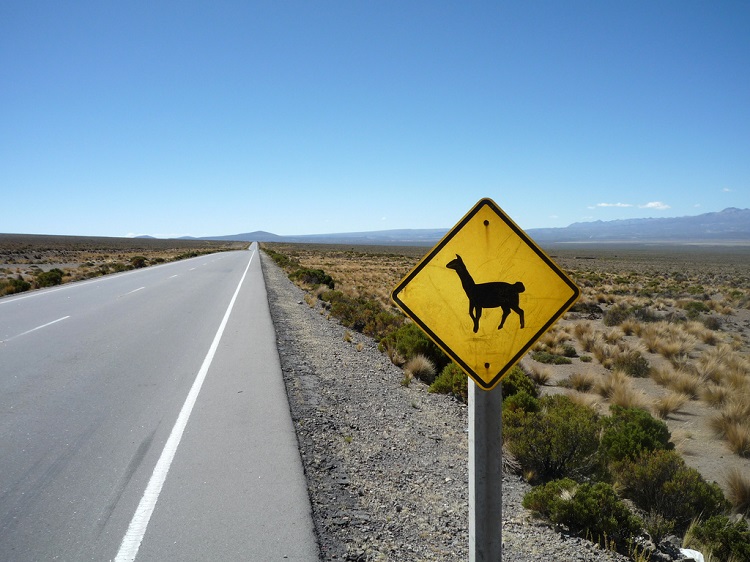
Photo Credit: Twiga269
- Sajama National Park is situated at altitudes over 4000 meters so it is advisable to spend a day or two acclimatising before undertaking any strenuous activity
- Due to the harsh climate, it’s important to take clothes you can layer, sunglasses, hat, sunscreen and chap-stick
- Upon arriving in Sajama village, all travelers must register at the park office (SERNAP), open daily from 8am – 12pm and 2:30pm – 7pm
- The closest ATM to Sajama is in Patacamaya so make sure to bring cash with you.
Have you visited Sajama National Park? Share your experience below:

